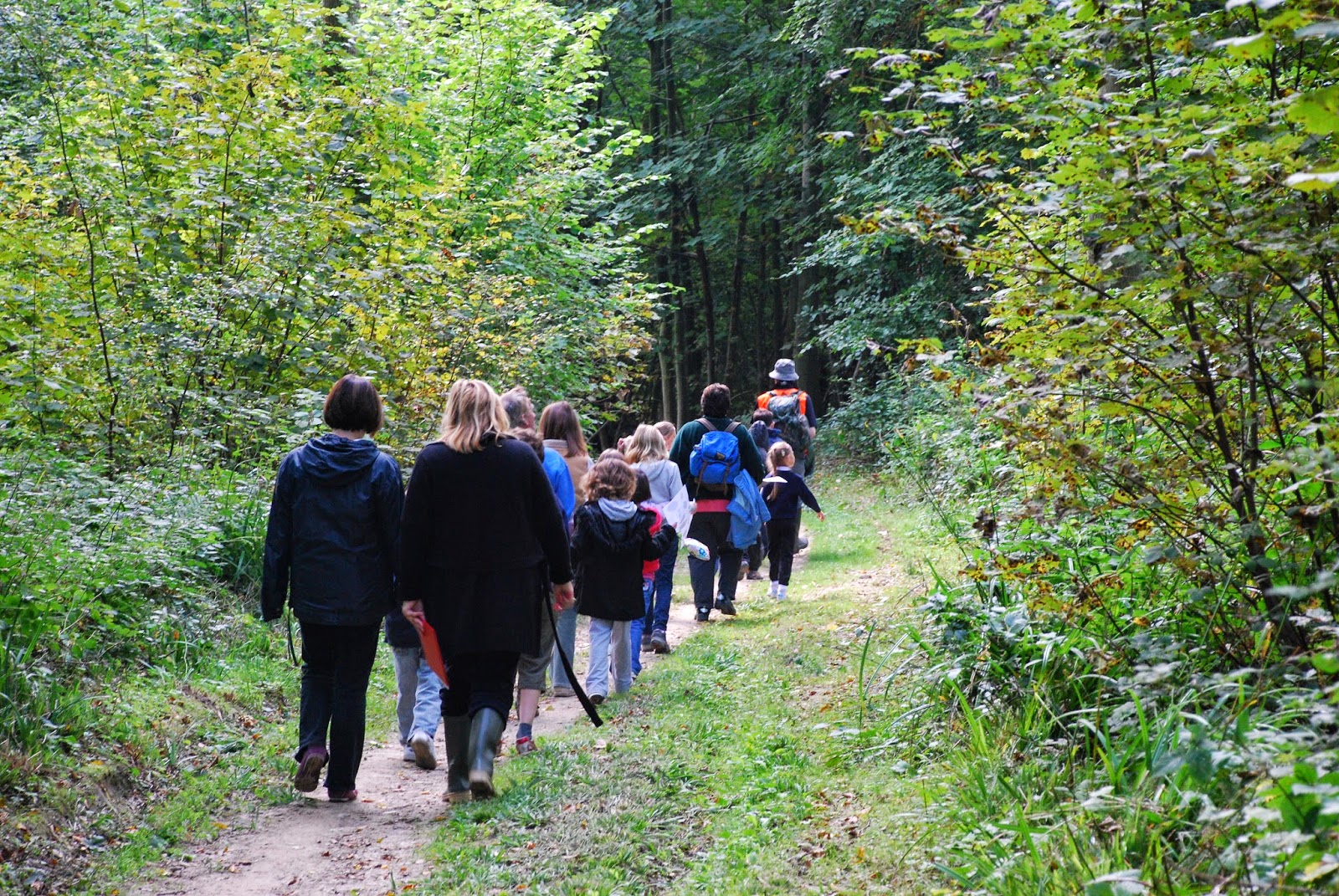 |
| Off to the woods we go! (Photo: The Woodland Trust) |
These days, however, kids often don't get the opportunities to enjoy the great outdoors. According to the RSPB, only 21 per cent of eight to 12-year-olds currently living in the UK have a discernible connection with nature. Children need to learn about, value and understand nature so they are inspired to care for it from an early age. The younger a child experiences contact with nature such as planting a tree or walking through woodland, the closer their connection with the environment will be as they grow into adulthood.
Teachers and school staff are in a prime position to connect children and young people with nature and prepare them for their role as future guardians of the environment – but how can they do so?
This post marks the start of a four-part series on outdoor learning, in which we will provide you with some helpful advice on taking learning outdoors and offer a number of inventive ways to engage students with the natural world, this spring and beyond.
What is outdoor learning?
Outdoor learning is, quite simply, organised learning that takes place in the outdoors.
Contrary to popular belief, it doesn't have to be dangerous, expensive or out of your comfort zone. Although the overarching label ‘outdoor learning’ can include adventurous pursuits such as hiking, climbing and kayaking, it can purely be about taking your normal, everyday curriculum and bringing it to life by teaching outside.
Getting started
First of all you have to choose where to go! This doesn't have to be a far away spot, it can be close to the school and within walking distance - it can be the school grounds, a local park, even a nearby patch of woodland.
To find the nearest space for outdoor learning, you can go to www.visitwoods.org.uk and simply search using your postcode.
5 ways to get kids excited about a day in the woods
Learning is a journey. You can stimulate interest, intrigue and imagination in your new outdoor learning topic from the start by using varied approaches to introducing it.
Here are some simple but inventive ways to start your outdoor learning journey:
- Surprise invitation or parcel – Send an invitation letter (or email) to the class asking them to visit their local woodland or asking for their help to investigate an environmental issue. Arrange for a surprise package to be delivered, addressed to the class. Fill it with items that will spark discussion about the new topic.
- Share a story – Find a good story that illustrates the topic and gives you an opportunity to talk around the subject with your class before going outdoors. The children could bring sections of it to life for one another using natural materials to stimulate the senses – or even write their own story to share.
- Fictional characters – Bringing in a recognisable toy from a relevant book can provide a great stimulus for your outdoor topic. For example, an Eeyore (or even a home-made ‘Stickman’!) with a Paddington-style ‘Please look after this...’ label. Children in one class in a primary school in West Lothian arrived one morning to find a paper trail of animal tracks leading into the classroom. At the end of them, a toy fox and its cub were sitting in the centre of the floor with a letter next to them. The letter explained how the foxes’ home – the enchanted woodland – had been destroyed and so they no longer had anywhere to live. It asked the children if they could help the foxes create a new home.
- Interesting maps – Create a map of your local woodland area stylised to look like a very old map, a treasure map or one found in a book that is familiar to the children –from Winnie the Pooh, for example. Use intriguingly enigmatic names for features they will find there (old trees, hills, mossy stumps and so on) and clues as to what they might do in particular spots. Hang it on the classroom wall for a week or two before visiting the outdoor area to help build a sense of expectation and excitement.
- Mysterious photographs – Arrange for the children to arrive back after break to find the room darkened and a slideshow of photographs showing familiar local places taken from unusual angles. Play some suitable music or woodland sounds to create a calm atmosphere. This will increase anticipation for their woodland walk, but will also get the children focused on trying to guess exactly where the photos were taken.
 |
| There's such a thing as too excited... (Photo: The Woodland Trust) |
Follow our blog for more inspiration and helpful advice on planning the perfect outdoor activities. Our next instalment of this series will provide a number of strategies for making teaching outside easier and more enjoyable.
The material in this series of articles is taken from the article 'A practical guide to outdoor learning' by Amy Williams of The Woodland Trust.

In a virtual reality environment, a user experiences immersion, or the feeling of being inside and a part of that world. AR Development
ReplyDelete